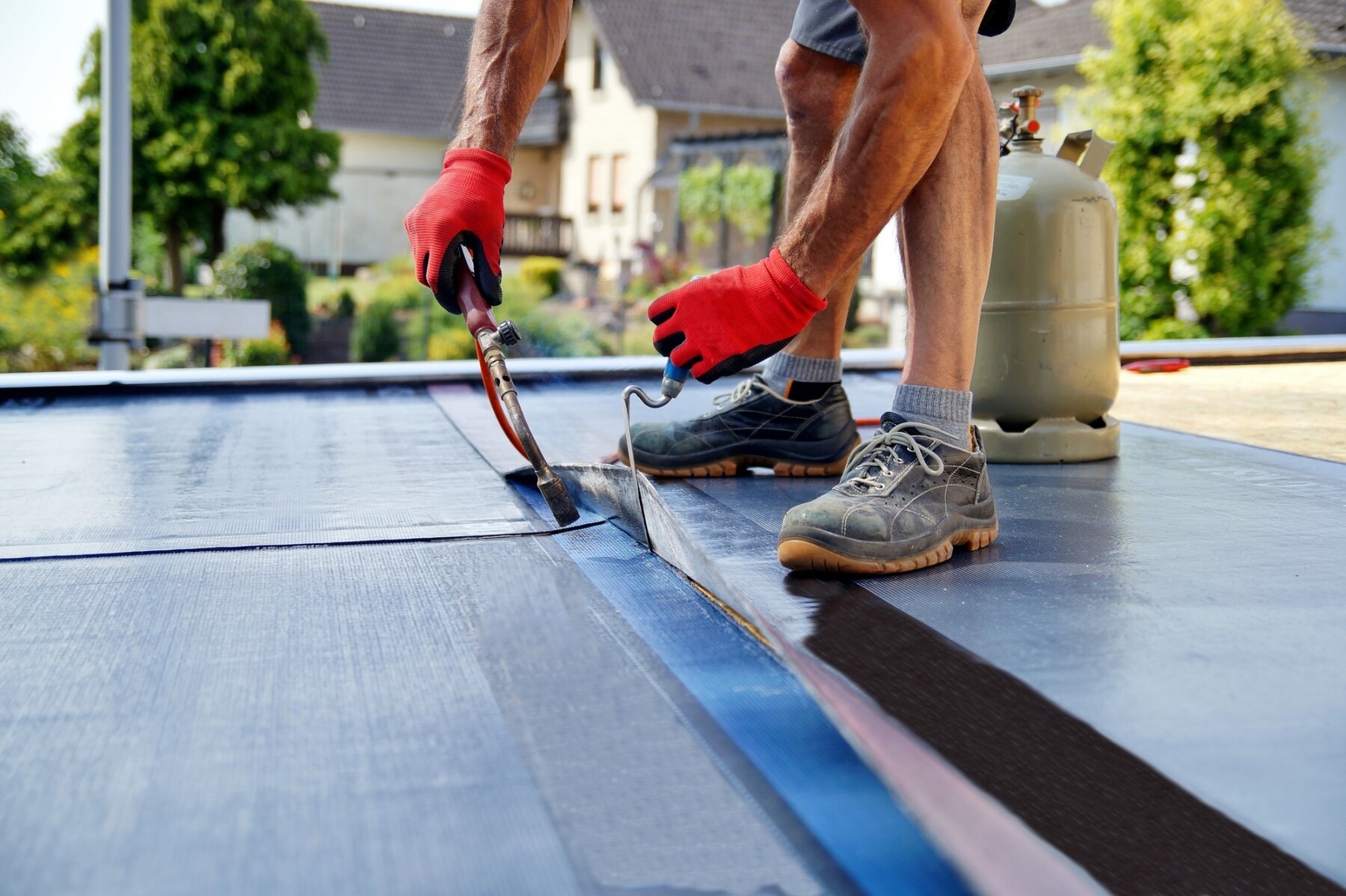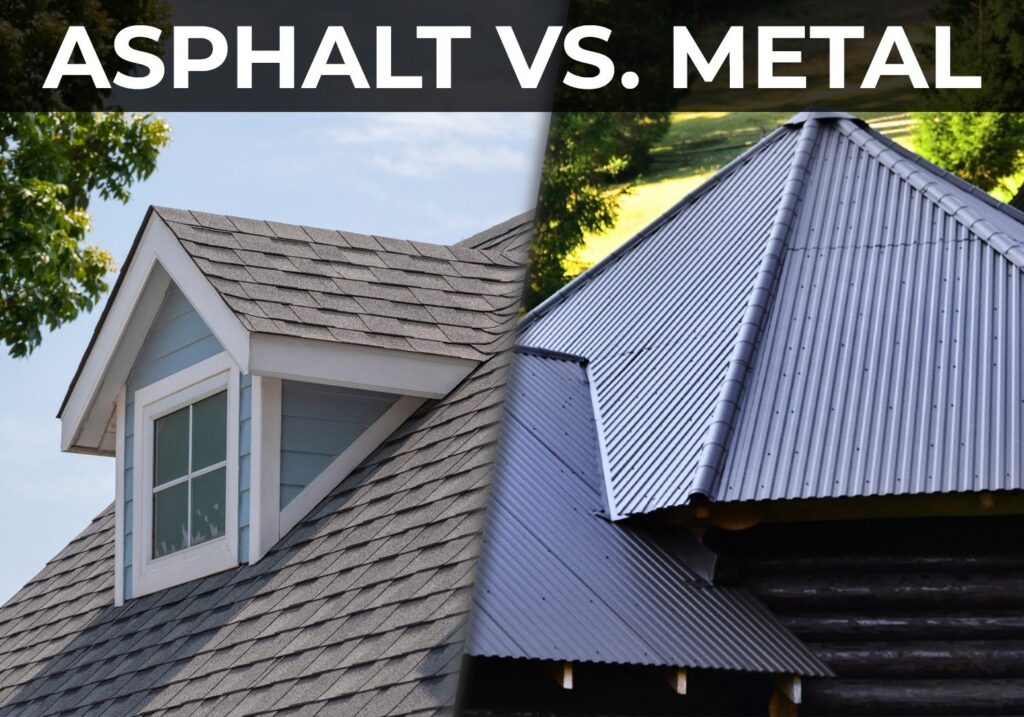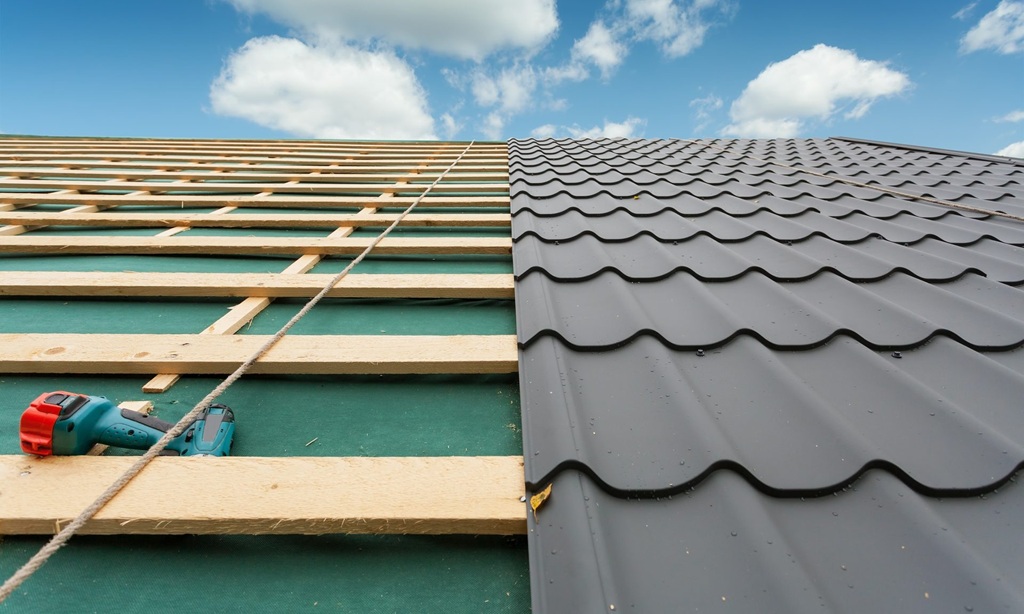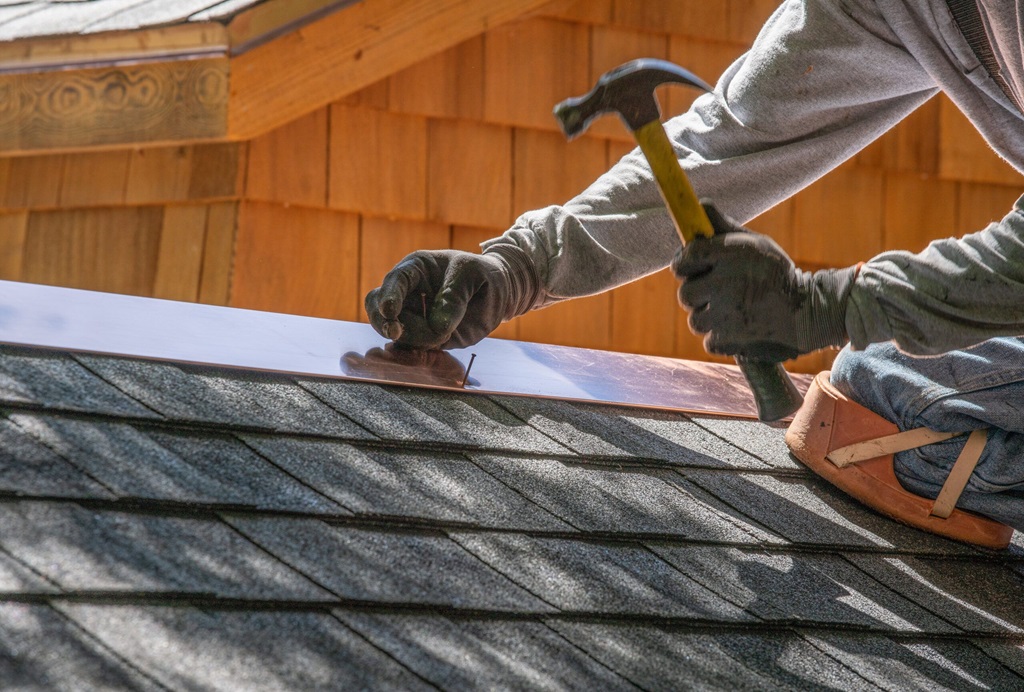In the realm of commercial and residential construction, the quest for a reliable, durable, and cost-effective roofing solution for flat or low-slope structures has been a persistent endeavor. Among the myriad options available, Ethylene Propylene Diene Monomer (EPDM) roofing reigns roofing has emerged as a clear frontrunner, consistently captivating builders, architects, and homeowners alike. Its widespread popularity isn’t a mere coincidence; it’s a testament to the material’s exceptional performance, longevity, and adaptability. Let’s delve deep into the intricacies of EPDM roofing, exploring the factors that solidify its position as the preferred choice for flat roofs.
The Genesis of EPDM: A Synthetic Marvel Engineered for Endurance
EPDM, a synthetic rubber renowned for its remarkable resilience, is the cornerstone of these roofing systems. Its composition, a blend of ethylene and propylene derived from oil and natural gas, undergoes a meticulous vulcanization process, bestowing it with unparalleled durability and weather resistance. This unique chemical structure enables EPDM to withstand extreme temperature fluctuations, resist ultraviolet (UV) radiation, and maintain its flexibility even in the harshest environments. The result is a roofing membrane that defies the elements, offering decades of reliable protection.
Unwavering Durability: A Shield Against Time and Elements
One of the most compelling reasons for EPDM’s dominance is its exceptional durability. This robust material exhibits remarkable resistance to weathering, ozone, and abrasion, ensuring a prolonged lifespan that often surpasses traditional roofing alternatives. Unlike asphalt or modified bitumen, EPDM doesn’t become brittle or crack under prolonged sun exposure, maintaining its integrity and flexibility for years. This inherent durability translates to minimal maintenance requirements and reduced long-term costs, making it a sound investment for property owners.
Seamless Protection: Minimizing Leakage Risks
Flat roofs, by their very nature, are prone to water accumulation, increasing the risk of leaks. EPDM roofing addresses this concern with its ability to be installed in large, seamless sheets, minimizing the number of seams and potential entry points for water. This seamless application, coupled with the material’s inherent waterproof properties, creates an impenetrable barrier against moisture, safeguarding the underlying structure from water damage and mold growth.
Flexibility and Adaptability: Conquering Complex Roof Designs
Flat roofs often present unique architectural challenges, incorporating intricate penetrations, HVAC units, and other rooftop equipment. EPDM roofing’s flexibility and adaptability make it an ideal solution for these complex designs. The material can be easily cut, shaped, and adhered to accommodate various roof configurations, ensuring a watertight seal around penetrations and preventing potential leaks. This adaptability extends to both new construction and roof replacements, offering versatility for diverse project requirements.
Energy Efficiency: Reflecting Sunlight and Reducing Cooling Costs
In an era of increasing environmental consciousness, energy efficiency has become a crucial consideration in building design. EPDM roofing contributes to energy savings by reflecting sunlight and reducing heat absorption. This reflective property, particularly evident in lighter-colored EPDM membranes, minimizes the need for excessive air conditioning, resulting in lower energy bills and a reduced carbon footprint. This energy efficiency advantage makes EPDM an environmentally responsible choice for sustainable building practices.
Cost-Effectiveness: A Long-Term Investment with Minimal Maintenance
While the initial cost of EPDM roofing may be slightly higher than some traditional alternatives, its long-term cost-effectiveness is undeniable. The material’s exceptional durability and minimal maintenance requirements translate to significant savings over the roof’s lifespan. EPDM roofs typically require only periodic inspections and occasional cleaning, eliminating the need for frequent repairs or replacements. This longevity and low maintenance make EPDM a wise investment for property owners seeking a reliable and cost-effective roofing solution.
Ease of Installation: Streamlining the Construction Process
EPDM roofing’s ease of installation is another significant advantage. The material can be installed using various methods, including fully adhered, mechanically attached, or ballasted systems, offering flexibility to suit different project needs and budgets. This simplified installation process translates to reduced labor costs and faster project completion times, minimizing disruption and maximizing efficiency.
Environmental Friendliness: A Sustainable Roofing Choice
In addition to its energy efficiency benefits, EPDM roofing is also considered an environmentally friendly material. The manufacturing process produces minimal waste, and the material itself is recyclable, reducing its environmental impact. Furthermore, EPDM roofs can be incorporated into green roof systems, providing additional insulation and promoting biodiversity. This commitment to sustainability aligns with the growing demand for eco-conscious building practices.
Noise Reduction: Creating a Quieter Indoor Environment
Flat roofs can amplify noise from rain and other external sources, creating a disruptive indoor environment. EPDM roofing’s dense and flexible structure effectively absorbs sound, reducing noise transmission and creating a quieter and more comfortable interior space. This noise reduction property is particularly beneficial for commercial buildings and residential properties located in noisy urban environments.
Fire Resistance: Enhancing Safety and Security
EPDM roofing systems are designed to meet stringent fire safety standards, providing an additional layer of protection for buildings and occupants. The material’s inherent fire resistance helps to prevent the spread of flames, minimizing the risk of fire damage and enhancing overall building safety. This fire resistance property is crucial for commercial buildings and residential properties located in fire-prone areas.
Longevity and Minimal Maintenance: A Wise Investment for the Future
EPDM roofing’s longevity is a testament to its exceptional durability and resistance to weathering. With proper installation and minimal maintenance, EPDM roofs can last for 30 years or more, providing decades of reliable protection. This extended lifespan translates to significant savings over the roof’s life cycle, making it a wise investment for property owners seeking a long-term roofing solution.
Read More Also: Why Neutral Colors Are the Timeless Choice for Home Interiors
People Also Ask (FAQs):
Q: How long does EPDM roofing last?
A: EPDM roofing can last for 30 years or more with proper installation and minimal maintenance. Its exceptional durability and resistance to weathering contribute to its extended lifespan.
Q: Is EPDM roofing expensive?
A: While the initial cost of EPDM roofing may be slightly higher than some traditional alternatives, its long-term cost-effectiveness is undeniable. The material’s durability and minimal maintenance requirements translate to significant savings over the roof’s lifespan.
Q: Can EPDM roofing be installed on any flat roof?
A: EPDM roofing is compatible with most flat or low-slope roofs. Its flexibility and adaptability make it suitable for various roof configurations and designs.
Q: Is EPDM roofing environmentally friendly?
A: Yes, EPDM roofing is considered an environmentally friendly material. The manufacturing process produces minimal waste, and the material itself is recyclable.
Q: What are the benefits of EPDM roofing for commercial buildings?
A: EPDM roofing offers numerous benefits for commercial buildings, including durability, weather resistance, energy efficiency, and low maintenance requirements. Its ability to withstand heavy foot traffic and accommodate rooftop equipment makes it an ideal solution for commercial applications.
Q: Can EPDM roofing be repaired?
A: Yes, EPDM roofing can be repaired. Minor tears and punctures can be patched using specialized EPDM repair materials, extending the roof’s lifespan.
Q: What are the different installation methods for EPDM roofing?
A: EPDM roofing can be installed using various methods, including fully adhered, mechanically attached, or ballasted systems. The choice of installation method depends on the roof’s design, budget, and project requirements.
Q: Does EPDM roofing come in different colors?
A: Yes, EPDM roofing is available in various colors, including black, white, and gray. Lighter colors, such as white, offer enhanced reflectivity and energy efficiency.
Q: Is EPDM roofing resistant to hail?
A: Yes, EPDM roofing is resistant to hail. Its durable and flexible structure can withstand impacts from hailstones, minimizing the risk of damage.
Q: Does EPDM roofing require regular maintenance?
A: EPDM roofing requires minimal maintenance. Periodic inspections and occasional cleaning are typically sufficient to ensure the roof’s longevity and performance.
Read More Also: Roof Tiles: A Classic Choice for Modern Homes – Timeless Beauty Meets Contemporary Functionality
Conclusion: A Legacy of Reliability and Innovation
EPDM roofing has solidified its position as the premier choice for flat roofs, offering a compelling blend of durability, weather resistance, energy efficiency, and cost-effectiveness. Its seamless application, flexibility, and adaptability make it suitable for diverse project requirements, from commercial buildings to residential properties. As the construction industry continues to prioritize sustainability and long-term value, EPDM roofing remains a testament to innovation and reliability, providing a lasting shield against the elements and a wise investment for the future.






